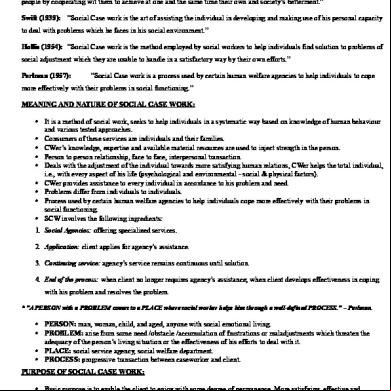Rpa Awareness Training Q.docx 45616n
This document was ed by and they confirmed that they have the permission to share it. If you are author or own the copyright of this book, please report to us by using this report form. Report 3i3n4
Overview 26281t
& View Rpa Awareness Training Q.docx as PDF for free.
More details 6y5l6z
- Words: 494
- Pages: 3
RPA Awareness Training Q&A: 1) Which of the robot types below are currently provided by UiPath?
Unattended robots
Front-office robots
Attended robots
Back-office robots Score: 10 Single choice
2) What processes should I automate?
Semi-automated processes that involve high transaction volumes and are liable to change in the next 3-6 months
Complex processes that involve judgmental decisions
Simple, stable, manual, and repetitive processes with high transaction volumes and standard
electronic input type Score: 0 Single choice
3) What is the UiPath designer tool?
Studio
Orchestrator
Robot Score: 10 Single choice
4) Which UiPath component provides robot management capabilities?
The entire UiPath ecosystem
UiPath Orchestrator
UiPath Studio Score: 10
Single choice
5) Which UiPath component executes processes?
Kibana
Robots
Studio
Orchestrator Score: 10 Multiple Choice
6) What is Robotic Process Automation?
An industrial robot that involves using physical machines and control systems to automate tasks within an industrial process
Automation that interacts with computer-centric processes through a software Interface
Automation that perfectly emulates repetitive tasks performed by human workers through the
Interface Score: 0 Multiple Choice
7) What are the advantages of each CoE type?
Hybrid COE: Decreased risk of prioritization challenges due to smaller and dedicated RPA COEs
Centralized COE: Expertise; the learned lessons and the best practices are more easily disseminated
Federated COE: Regular exchange of best practice across different business units must be enforced Score: 0 Single choice
8) What are the phases of an RPA journey?
Assessing the RPA capability, building a Business Case, running a POC or a Hackathon, enabling a COE, initializing the pilot RPA project, evaluating the pilot and documenting the learned lessons, institutionalizing the RPA solution
Assessing the RPA capability, building a Business Case, running a POC or a Hackathon, Enabling a COE, initializing the pilot RPA project, evaluating the pilot and documenting the learned lessons,
stabilizing the project in production, finishing the project Score: 10 Multiple Choice
9) What are the benefits of RPA implementation?
Improved customer experience - RPA boosts the quality of the services delivered by minimizing manual intervention, errors and work duplication, while rapidly decreasing processing times, which leads to better SLAs
The technology is non-invasive, which means that companies do not need to make changes to existing legacy systems when implementing RPA
Cost reduction and Rapid ROI - An RPA robot costs a fraction of an FTE and can work 24/7/365; the ROI occurs in 6 to 9 months, due the high speed of automation
Mainly FTE saving – without FTE saving, the automation is not taken into consideration
Increased compliance by eliminating human error Score: 0 Multiple Choice
10) What are the disadvantages of each CoE type?
Hybrid COE: Discrepancy in know-how between the main and the smaller RPA COEs
Centralized COE: Automation prioritization challenges Score: 0
Unattended robots
Front-office robots
Attended robots
Back-office robots Score: 10 Single choice
2) What processes should I automate?
Semi-automated processes that involve high transaction volumes and are liable to change in the next 3-6 months
Complex processes that involve judgmental decisions
Simple, stable, manual, and repetitive processes with high transaction volumes and standard
electronic input type Score: 0 Single choice
3) What is the UiPath designer tool?
Studio
Orchestrator
Robot Score: 10 Single choice
4) Which UiPath component provides robot management capabilities?
The entire UiPath ecosystem
UiPath Orchestrator
UiPath Studio Score: 10
Single choice
5) Which UiPath component executes processes?
Kibana
Robots
Studio
Orchestrator Score: 10 Multiple Choice
6) What is Robotic Process Automation?
An industrial robot that involves using physical machines and control systems to automate tasks within an industrial process
Automation that interacts with computer-centric processes through a software Interface
Automation that perfectly emulates repetitive tasks performed by human workers through the
Interface Score: 0 Multiple Choice
7) What are the advantages of each CoE type?
Hybrid COE: Decreased risk of prioritization challenges due to smaller and dedicated RPA COEs
Centralized COE: Expertise; the learned lessons and the best practices are more easily disseminated
Federated COE: Regular exchange of best practice across different business units must be enforced Score: 0 Single choice
8) What are the phases of an RPA journey?
Assessing the RPA capability, building a Business Case, running a POC or a Hackathon, enabling a COE, initializing the pilot RPA project, evaluating the pilot and documenting the learned lessons, institutionalizing the RPA solution
Assessing the RPA capability, building a Business Case, running a POC or a Hackathon, Enabling a COE, initializing the pilot RPA project, evaluating the pilot and documenting the learned lessons,
stabilizing the project in production, finishing the project Score: 10 Multiple Choice
9) What are the benefits of RPA implementation?
Improved customer experience - RPA boosts the quality of the services delivered by minimizing manual intervention, errors and work duplication, while rapidly decreasing processing times, which leads to better SLAs
The technology is non-invasive, which means that companies do not need to make changes to existing legacy systems when implementing RPA
Cost reduction and Rapid ROI - An RPA robot costs a fraction of an FTE and can work 24/7/365; the ROI occurs in 6 to 9 months, due the high speed of automation
Mainly FTE saving – without FTE saving, the automation is not taken into consideration
Increased compliance by eliminating human error Score: 0 Multiple Choice
10) What are the disadvantages of each CoE type?
Hybrid COE: Discrepancy in know-how between the main and the smaller RPA COEs
Centralized COE: Automation prioritization challenges Score: 0










